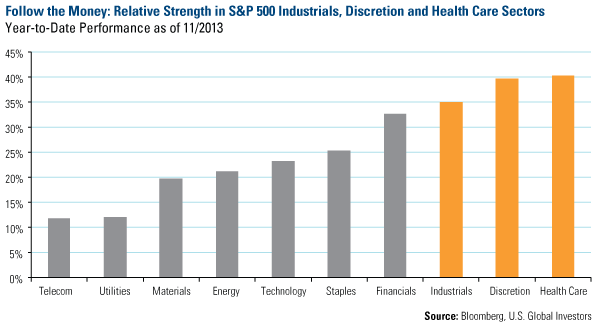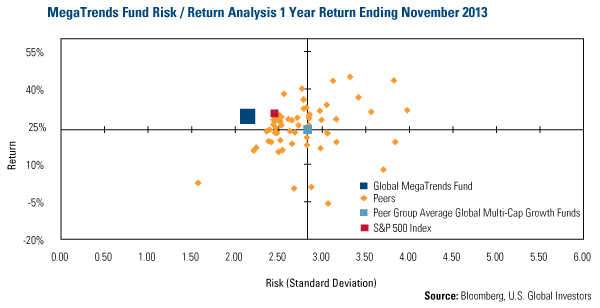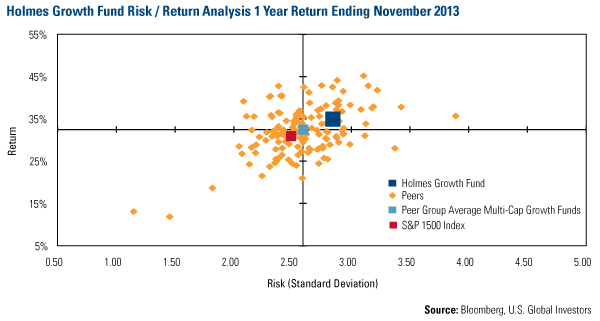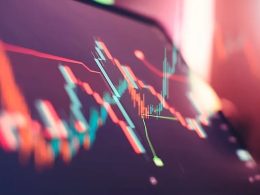By Frank Holmes, CEO and Chief Investment Officer, U.S. Global Investors
From New Delhi to San Francisco to London, and finally back in San Antonio, I’ve been communicating one consistent theme to investors: Follow the money.
What’s really important in following the money is for investors to not get caught up in the negative web spun by the media. There’s a lot of drama these days about Obamacare and Washington dysfunction. Take the government shutdown in October, when the House and Senate fought over the debt ceiling. Economic data wasn’t released, services were halted, national parks were closed, and “non-essential” government workers were told to stay home.
As a result, GDP was expected to collapse.
Yet, data released this week reveal a different, stronger image of the U.S. economy. I think Shakespeare would deem the media’s fear mongering tactics as “Much Ado About Nothing.”
Third-quarter GDP growth was recently revised to 3.6 percent, much higher than the estimated 2.8 percent figure. In November, more jobs were created and the unemployment rate fell to 7 percent. Not a spectacular result, but better than expected.
Perhaps people are gaining confidence in the U.S. economy, as figures show a buying spree in large purchases of new homes and vehicles.
In October, U.S. new home sales rebounded from a one-year low. According to Bloomberg, sales increased more than 25 percent, despite “this year’s increase in borrowing costs and property values.” As a “sign of growing momentum” for the housing market, applications for building permits also climbed to a five-year high, says Bloomberg.
Many garages will be filled with new cars and more expensive trucks and sport utility vehicles, as 16 million automobiles were sold in November, the fastest pace since February 2007, according to Autodata. American automobile makers “drove the blistering sales month,” with General Motors sales growing nearly 14 percent and Chrysler sales increasing 16 percent in November, says USA Today.
These facts support what we’ve been seeing in the U.S. purchasing manager’s index (PMI), which climbed to a ten-month high in November. Generally, PMIs are a leading indicator of future economic trends.
So, we shouldn’t hope for a government shutdown again … or should we?
Here’s a Simple Way to Follow the Money: Look for the leaders and understand the laggards. Here’s a chart showing the top sector performance among the S&P 500 Index since January. With the revolution occurring in the health care industry, the sector has seen an incredible 40 percent increase, closely followed by consumer discretionary. Industrials stocks, which rose about 35 percent, have gotten a boost from PMI’s jumper cables.
Meanwhile, defensive areas such as telecommunications and utilities have lagged, as rising interest rates have made these defensive companies’ dividend yields less desirable.
To get an idea of the companies held in each of these sectors, the following are the largest stocks in terms of market capitalization: In industrials, General Electric (GE) is the biggest; in consumer discretionary, Amazon (AMZN) takes the lead; and in health care, it’s Johnson & Johnson (JNJ).
On a year-to-date basis, in industrials, airlines such as Delta (DAL), have taken off. Among discretionary stocks, Netflix (NFLX) is the leader, and within the health care sector, biotechnology companies, such as Celgene (CELG), have increased the most.
Ranking sectors and stocks this way, it’s easy to follow the leaders. It’s like Newton’s First Law of Motion: once in motion, these stocks tend to stay in motion.
We’ve applied this top-down strategy to the MegaTrends Fund (MEGAX), helping the fund outperform its Lipper peers with less risk over the last year.
In other words, over this time period, the fund is in “Seattle.”
In the investment business, we often chart funds on a matrix of risk and return. The top left quadrant offers the greatest return for less risk, which is where you want your investments to be. If you imagine the matrix as a map of the U.S., you’d want your portfolio to land in “Seattle.”
The bottom right quadrant is where an investment has produced below-average returns with above-average risk. In our map analogy, you don’t want to find your portfolio in “Miami.”
While the MegaTrends Fund utilizes a macro-driven, proprietary strategy to identify sectors, the Holmes Growth Fund (ACBGX) uses what we call the “10-20-20 Model.” The stock-picking process is dynamic and focuses on companies growing revenues at 10 percent, generating a 20 percent earnings growth rate and a 20 percent return-on-equity. As you can see below, over the past year, the fund has increased more than its peers with slightly more risk.
We recently recommended to shareholders that the investment objective and strategies of these two funds be merged. The merger is subject to the approval of MegaTrends Fund shareholders at a shareholder meeting on December 20.
U.S. Global Investors’ third U.S. equity-focused fund, the All American Equity Fund (GBTFX), also landed in “Seattle” over the one-year period.
See the funds’ most recent performance.
Will the Domestic Bull Run Continue?
The synchronized global recovery continues to take place. Just this week, Japan announced additional fiscal stimulus. In addition, China continues to grow, with sweeping economic reforms taking place, and Europe is expected to recover. Further, based on fund flows of investors selling their bonds and buying equities, we expect this trend to continue for a while. As I often say, trying to stop a bull market has risks, so follow the money.
Saying Goodbye to a Prince of Peace
Yesterday, the world lost one of our heroes. There are so few people in this world who have fought for freedom in such a benevolent way as Nelson Mandela.
I’m humbled to have met the former president of South Africa at a leadership event years ago and what impresses me to this day was his kind and compassionate spirit. While he could have led with resentment and bitterness, he chose to be peaceful, taking the baton from F.W. de Klerk to unify South Africa. For their efforts, both men were awarded the Nobel Peace Prize 1993 for peacefully terminating the Apartheid regime and laying the foundations for a democratic nation.
Nelson Mandela was truly the model of peace and prosperity, and will be revered as much as we admire Mahatma Gandhi and Mother Theresa. For future generations, he is a reminder that some individuals truly have the capacity to change the world.
John Derrick, CFA, director of research, contributed to this commentary.





















